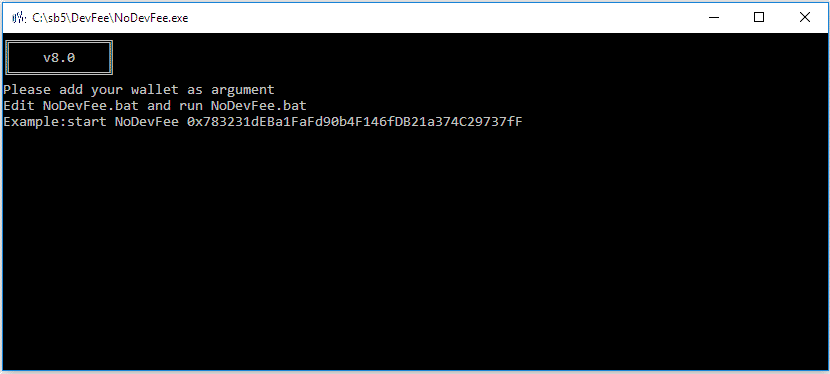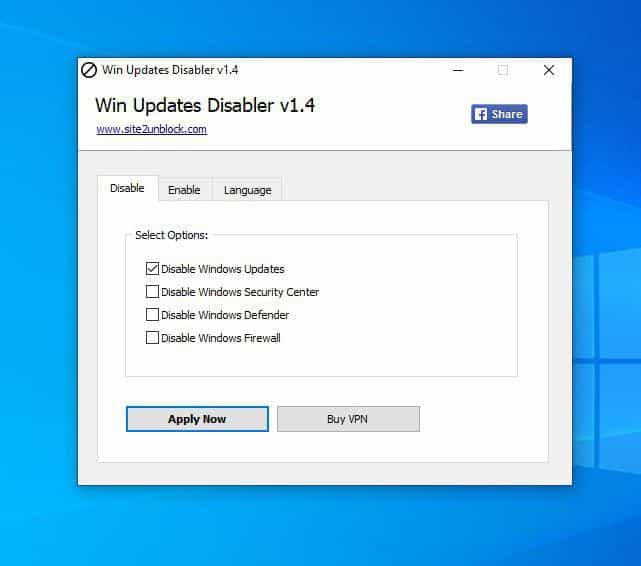What Is Cryptocurrency In Simple Words For Beginners
The growing popularity of Bitcoin, Ethereum and other cryptocurrencies lead many to ask the question «What is a cryptocurrency?». Not everyone understands what it is, how it works and what it’s for. Let’s try to answer these questions in simple words.
Cryptocurrency is an electronic payment and investment tool that is completely virtual, stored on electronic wallets. The unit of measurement of each cryptocurrency is «coin», i.e. the coin. It is not possible to forge, copy such coins or transactions because the technology uses digital signature and encryption, i.e. cryptography.

What is cryptocurrency?
The term «cryptocurrency» was first used by «Forbes» magazine. The article on Bitcoin was called something innovative for those times and meant the beginning of a new era.
So how does cryptocurrency differ from real money and bank accounts? What are the main differences? Cryptocurrency for Dummies and many courses on crypto technologies and blockchain are suitable for both newcomers and experts nowadays. Today is the best time to build your educational process and become a true specialist in the field of Cryptocurrency.
Peculiarities and differences between cryptocurrency and real money
Cryptocurrencies are electronic currencies with a number of distinctive characteristics that differentiate them from real money, bank accounts, and other payment systems. Consider these differences with simple explanations.
- Cryptocurrencies are completely virtual.
Unlike fiat (real) money, cryptocurrencies have no real expression. In order for money to appear in your bank account or in any payment system, you first have to put it there – through the bank’s cashier’s office, terminal, etc. Cryptocurrencies are issued virtually by the members of the system.
- Decentralization.
The cryptocurrency is decentralized, i.e. there is no single authority that issues it (releases it), regulates its circulation and exercises control. The cryptocurrency is based on blockchain technology. This technology stores the database and processes on the computers of the participants of the system. The history of all transactions is usually stored in the so-called «cold» wallet, which is installed by the system users on the computer. The cryptocurrency is issued by means of miners by anyone who wishes.
- Anonymity.
Every cryptocurrency is an anonymous system. When creating a cryptocurrency wallet, it is not necessary to confirm the identity and give your name and data. All transactions are anonymous.
- Lack of mediators.
When using fiat money, there are always intermediaries – banks, payment systems, etc. These intermediaries set their own rules, take interest in their work. The cryptocurrency is received directly from the sender to the recipient.
- Open source, full system transparency.
Cryptocurrencies are not immune to inflation. The price of a cryptocurrency depends on the demand for it and is not tied to the economy of states.
- Protection against forgery.
Cryptocurrency is a fully secure system, and they can’t be counterfeited, copied.
- Low fees for payments.
Commissions on cryptocurrency transactions typically comprise one-thousandth of a coin. However, with a very high price for a specific cryptocurrency and a heavy network burden (as with Bitcoin in late 2017), the transaction price may not be so cheap.
- The impossibility of using crypto coins when you lose access to your wallet.
If the owner of the «cold» wallet has lost to it accesses, has forgotten the password, then it is not possible to use the money. This creates some inconvenience, but at the same time increases the value of the coins by reducing their turnover.
What cryptocurrencies and algorithms exist

Since the foundation of the first Bitcoin cryptocurrency in 2008, many cryptocurrencies have appeared. Cryptocurrencies differ in diverse parameters – anonymity, security, block size, etc. The nuances of cryptocurrencies are related to the algorithm on which the system works.
What Is a Blockchain?
A blockchain is an appropriated data set that is divided between the hubs of a PC organization. Blockchain is known for its urgent job in cryptographic forms of money like Bitcoin, giving a protected and decentralized record of exchanges.
One of the primary distinctions between a common information base and a blockchain is the construction of the information. Blockchain gathers data into gatherings, called blocks, which contain sets of data. Blocks have a particular stockpiling limit, are shut when filled, and are connected to recently filled blocks, shaping a chain of information called a blockchain. All new data after this recently added block is accumulated into a recently framed block, which will then likewise be added to the chain subsequent to filling.
While data sets ordinarily structure their information into tables, blockchains, as the name proposes, structures their information into interconnected blocks (lumps). This information structure innately makes an irreversible information timetable when executed decentralized. Whenever a square is filled, it is moored to the stone and turns out to be important for that course of events. Each square in the chain is allocated a careful timestamp when it is added to the chain.
Most popular cryptocurrencies
Name | Price | Market capitalization | About |
Bitcoin (BTC) | $39,198 | $744 billion | As a harbinger of the time of cryptographic forms of money, Bitcoin is as yet the coin that individuals normally allude to while discussing advanced monetary standards. Its secretive maker – purportedly Satoshi Nakamoto – sent off the money in 2009, and it’s been on an exciting ride from that point forward. In any case, it was only after 2017 that digital currencies entered the mass awareness. |
Ethereum (ETH) | $2,599 | $312 billion | Ethereum – the name of the cryptographic money stage – is the subsequent name you’re probably going to perceive in the crypto space. The framework permits you to utilize ether (cash) to fill numerous roles, however the brilliant agreement part of ethereum helps make it a famous money. |
Tether (USDT) | $1.00 | $80 billion | The cost of Tether is fixed at $1 per coin. This is on the grounds that it is an alleged stablecoin. Stablecoins are attached to the worth of a particular resource, on account of Tether, the U.S. dollar. Tie for the most part goes about as a mode for dealers to move starting with one cryptographic money then onto the next. Rather than returning to dollars, they utilized Tether. Nonetheless, some are worried that Tether isn’t supported by the wellbeing of the U.S. dollar as a save, yet rather utilizes a transient type of uncollateralized debt. |
Binance Coin (BNB) | $369.63 | $61 billion | Binance Coin is a digital currency given by Binance, one of the biggest cryptographic money trades on the planet. Initially made as a token to pay for exchanges at a rebate, Binance Coin can now be utilized to pay as well as purchase an assortment of labor and products. |
USD Coin (USDC) | $1.00
| $52 billion | Like Tether, USD Coin is a stablecoin fixed to the U.S. dollar, and that implies its worth shouldn’t vary. The cash’s organizers say it is supported by completely saved or “comparable fair worth” resources held in accounts with U.S. controllers. |
Most popular algorithms
Each cryptocurrency has its own algorithm. The most popular cryptocurrency algorithms are:
- SHA-256
- Scrypt
- X11
- Dagger-Hashimoto (Ethash)
- Equihash
- Cryptonight
What is Bitcoin?
Bitcoin is the first cryptocurrency in the world to appear in 2009. Its developer is an anonymous programmer or a group of programmers under the pseudonym Satoshi Nakamoto.
At the development stage, many programmers were interested in the Bitcoin project, but few believed in such success, which is now popular with Bitcoin and cryptocurrencies in general.
Bitcoin has the highest rate and the highest market capitalization of all cryptocurrencies.
Bitcoin, due to the fact that Bitcoin is the first cryptocurrency, has a number of technical imperfections. Bitcoin uses the SHA-256 algorithm. After a large number of transactions, the network is under pressure. In order for a transaction to have a confirmation priority and can be executed, a large fee has to be paid. Since the Bitcoin rate is high, the commission is too high and it is not very convenient to make small payments via Bitcoin.
At the moment, Bitcoin is more interesting as an investment instrument than a means of payment.
How do you buy a cryptocurrency?
Cryptocurrencies are something that can now be purchased with multiple means of payment quite easily. Cryptocurrencies can be bought at exchanges. It can be purchased quickly and in many ways.
Cryptocurrency can be purchased by means of different means of payment:
- Visa/Mastercard card;
- QIWI;
- Webmoney;
- Yandex.Money;
- Perfect Money;
- Paypal and many others.
Many cryptocurrencies can be bought on the exchange. The most convenient for newcomers will be cryptocurrencies:
- exmo.com (exmo.me);
- yobit.net (yobit.io).
After registering and confirming e-mail on these exchanges you can buy a cryptocurrency.
What is cryptocurrency mining? How to make cryptocurrency?

Cryptocurrencies can be generated by mining. Mining can now be done with a variety of tools. Consider the most popular.
- Mining on video cards.
Cryptocurrency is generated by computer graphics cards. However, not all video cards are suitable for this purpose.
- Mining on ASIC devices.
ASIC is a special device that is created for mining. Such devices are designed only for specific algorithms, not all cryptocurrencies can be mined by them. Most cryptocurrencies are mined by video cards and their algorithms provide protection against mining by ASIC devices.
- Cloud mining.
The point is that you’re not generating cryptocurrency with your own capabilities, but buying the capacity for mining on special services. The difference between the resulting cryptocurrency and the power charge will be revenue. The most popular service for mining is nicehash.com.
What can you buy with cryptocurrency?
While the quantity of organizations tolerating Bitcoin is developing consistently, huge exchanges including it are interesting. For instance, enrolled land exchanges utilizing cryptographic forms of money are uncommon. Nonetheless, different things can be bought on internet business destinations utilizing Bitcoin. The following are probably the most dynamic classifications.
1) Car dealerships
Some vehicle vendors as of now acknowledge Bitcoin as an installment technique. The rundown covers a scope of vehicles, including selling Lamborghinis (a number one among Bitcoin aficionados) to extravagance vendors who offer more reasonable vehicles like Subaru. Electric vehicle producer Tesla has turned into the biggest and most current name to join the rundown of organizations that permit you to purchase vehicles with cryptographic money. As per his Twitter channel, Tesla author Elon Musk is a crypto fan and said he upholds Bitcoin.
2) Technology and e-commerce products
A few organizations that for the most part sell tech items acknowledge bitcoin on their sites. These incorporate Newegg, AT&T and Microsoft. As of now, Microsoft just acknowledges bitcoin on its internet based store, not on the Xbox gaming stage. Overload, an online business stage that sells an assortment of items, was one of the principal destinations to acknowledge bitcoin starting around 2014; its originator Patrick Byrne was an early benefactor. Numerous different locales huge and little likewise permit you to purchase things with Bitcoin. Two models are Shopify and Japanese internet business monster Rakuten.
Remarkable opponents up until this point are Amazon and eBay, the world’s biggest web-based retailers. Back in 2014, Amazon said it had no designs to process bitcoin. This hesitance is perplexing, as organization claimed stages like Twitch permit and even empower the utilization of Bitcoin.
After Bitcoin’s cost flood in 2017, eBay considered permitting the digital money on its foundation. He even purchased huge pennant advertisements at digital money gatherings. In any case, in 2019, the San Jose, California-based organization didn’t say whether it would endorse digital currency based exchanges. , including cryptographic forms of money, and are keen on the NFT market. In the interim, PayPal, when an auxiliary of eBay, presently permits clients to purchase, sell and store cryptographic forms of money in their records.
3) Jewelry and expensive watches
Numerous extravagance merchandise makers and retailers have begun tolerating Bitcoin as an installment strategy. Online extravagance retailer BitDials offers Rolex, Patek Philippe and other excellent watches in return for bitcoin and other digital forms of money. Extravagance watch creator Franck Muller even delivered a watch set with gold and jewels and containing a QR code from Bitcoin’s beginning code.
4) News media
Crypto media typically acknowledge bitcoin memberships or different administrations. Among significant distributions, the Chicago Sun-Times turned into the principal significant distribution to acknowledge Bitcoin on its foundation in 2014. That very year, distributer of Time Inc. Begin tolerating cryptographic forms of money for computerized memberships.
5) Insurance
Generally, the protection business has been careful about utilizing cryptographic forms of money. Yet, things began to change. While extra security is as yet restricted, insurance agency have begun tolerating bitcoin to pay charges for different items in their portfolios. Swiss insurance agency AXA has declared that it has begun tolerating bitcoin as an installment technique for all of its protection lines with the exception of life coverage (because of administrative worries). Metromile, an office that sells vehicle insurance contracts on a for every mile premise, additionally acknowledges bitcoin for insurance payments.
Cryptocurrency fraud and cryptocurrency scams
- Ponzi conspire: This is a venture trick in which casualties are fooled into putting resources into a non-existent undertaking or “pyramid scheme” that simply fills the pockets of the tricksters.
- Digital currencies are ideal for this, as con artists generally make loosely determined “progressed” procedures to draw in financial backers and create higher virtual gains. Regardless, when the cash is virtual, it is not difficult to distort the information.
- Siphon and bust: Fraudsters urge financial backers to purchase crypto resources from lesser-realized digital money projects in view of misleading data. Resource costs then, at that point, rose, and the convicts sold their portions for an attractive benefit, leaving casualties with useless offers.
- Counterfeit big name supports: Fraudsters assume control over VIP online entertainment accounts or make counterfeit records to urge endorsers of put resources into these phony plans. In one case, the tricksters lost around $2 million, and they even utilized Elon Musk’s name on the bitcoin address to cause the trick to show up more dependable.
- Counterfeit trades: Fraudsters send messages or post via web-based entertainment promising to secure virtual cash put away on digital money trades. The main disadvantage is that clients for the most part need to pay a little charge front and center. The trade never exists and your cash is lost until the end of time.
- Counterfeit applications: Cybercriminals parody genuine cryptographic money applications and transfer them to application stores. Whenever introduced, it can take individual and monetary information or infuse malware into gadgets. Others could fool clients into paying for administrations that don’t exist or attempt to take login data from cryptographic money wallets.
- Counterfeit official statements. Fraudsters can now and again even stunt writers or assessment pioneers into spreading bogus data. This has happened two times before when genuine news destinations revealed that enormous retail organizations were prepared to acknowledge specific digital forms of money. The phony public statements on which these accounts are based are essential for a siphon and-dump plot intended to build the worth of the crypto resources the con artists hold in these cryptographic forms of money.
- Phishing/caricaturing. Phishing is one of the most famous types of trickery utilized by tricksters. Messages, instant messages, and web-based entertainment posts are fooled into having all the earmarks of being sent from authentic and confided in sources. At times this “source” -, for example, a Mastercard supplier, bank or government official – requests to pay for something in digital money. It generally attempts to convey a need to get moving so the client can move rapidly automatically.

Is cryptocurrency safe?
This is a real issue given the new flood in digital money exchanging and state run administrations attempting to stay aware of steady guideline. The security (or scarcity in that department) of cryptographic forms of money is probably going to stay a considerably greater worry before long, as a new report from Allied Market Research predicts that the worldwide digital currency market will dramatically multiply by 2030.
Basically until further notice, the response to the topic of how secure digital forms of money are is convoluted. Indeed, digital currencies accompany some security takes a chance with that you ought to know about prior to making your first exchange. In the first place, cryptographic forms of money are as yet a very unpredictable resource class, helpless against wild cost swings. Second, this generally new and moderately unregulated monetary biological system has its reasonable portion of tricksters going after clueless novices. In any case, digital forms of money have some security benefits that likewise make them appealing.
Putting resources into digital forms of money is viewed as hazardous contrasted with other resource classes, for example, stocks and government securities.
While digital currencies are by and large viewed as lawful in Europe, numerous parts of cryptographic forms of money stay unregulated or might be likely to evolving guidelines. Unstable guidelines could make cryptographic money showcases more powerless against instability – as we found in the mid year of 2021, when China’s crackdown on digital currency related movement harmonized with a drop in bitcoin costs. As numerous world state run administrations are gauging how to answer the development of cryptographic forms of money, there are various elements that could add to their unpredictability.
One more piece of the cryptographic money’s general instability comes from the way that it’s still moderately new, and financial backers may not as yet know how to manage it. Since digital currencies don’t have a similar chronicled proof as other resource classes, for example, stocks, they might be more defenseless against enormous cost swings brought about by changes in financial backer feeling. Some digital currencies are more inclined to this than others, however even Bitcoin, the most established and biggest cryptographic money by market capitalization, is known for stressing cost instability.
Assuming you are putting resources into cryptographic forms of money, you can diminish your gamble by not accepting beyond what you can bear to lose. The possibilities of any crypto resource crashing in cost on a given day are as yet non-zero, so be cautious and consider a differentiated portfolio where cryptographic forms of money assume a more modest part and are more theoretical.

Conclusion
Cryptocurrency is an interesting investment tool. But as with any investment, there are certain risks that need to be taken into account by investing and trying to explore the issue as much as possible. Stay tuned with our blog to get the most up-to-date cryptocurrency news. Leave your thoughts in the comments below. Good luck!



















